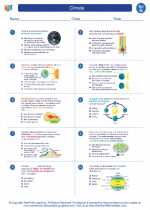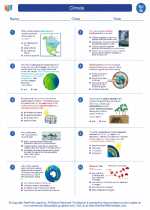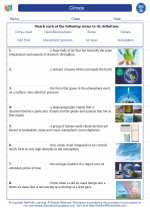Landforms
Landforms are natural features of the Earth's surface, such as mountains, valleys, plateaus, and plains. They are the result of various geological processes, including erosion, tectonic activity, and weathering. Understanding landforms is important in the field of Earth science, as they provide insights into the Earth's history and the forces that have shaped it over time.
Types of Landforms
There are several major types of landforms, each with its own unique characteristics and formation processes:
- Mountains: These are large landforms that rise prominently above their surroundings. They are typically formed through tectonic activity, including the collision of tectonic plates or volcanic activity.
- Valleys: Valleys are low-lying areas between hills or mountains, often carved out by the flow of rivers or glaciers over time.
- Plateaus: Plateaus are flat, elevated landforms that are often characterized by steep cliffs or slopes. They are formed through processes such as volcanic activity or the uplift of the Earth's crust.
- Plains: Plains are extensive, flat areas of land that are generally lower in elevation. They can be formed by the deposition of sediment over time or by the erosion of existing landforms.
- Coastlines: Coastlines are the boundary between land and water, and they can feature a variety of landforms, including beaches, cliffs, and coastal dunes. They are shaped by the action of waves, currents, and tides.
Formation Processes
Landforms are shaped by a variety of geological processes, including:
- Erosion: The wearing away of land by wind, water, or ice.
- Weathering: The breakdown of rocks and minerals at the Earth's surface.
- Tectonic activity: The movement and interaction of the Earth's lithospheric plates, leading to the formation of mountains, valleys, and other landforms.
- Volcanic activity: The eruption of magma onto the Earth's surface, leading to the formation of volcanic mountains and plateaus.
- Deposition: The laying down of sediment by wind, water, or ice, leading to the formation of plains and other flat landforms.
Studying Landforms
To study landforms, it is important to understand the key concepts and processes involved in their formation. This can involve fieldwork, map analysis, and the use of tools such as aerial photographs and satellite imagery. Additionally, understanding the geological history of a region is crucial in interpreting the landforms present.
Students can also benefit from hands-on activities, such as building models of different landforms and simulating erosion and weathering processes. This can help reinforce their understanding of how landforms are shaped and changed over time.
Moreover, learning about the diverse landforms found in different regions of the world can provide valuable insights into the geological and environmental diversity of the Earth.
By exploring the formation processes and characteristics of landforms, students can gain a deeper appreciation for the dynamic and ever-changing nature of the Earth's surface.
So, that's the overview of landforms! Let me know if you want to delve deeper into any specific aspect of this topic.










